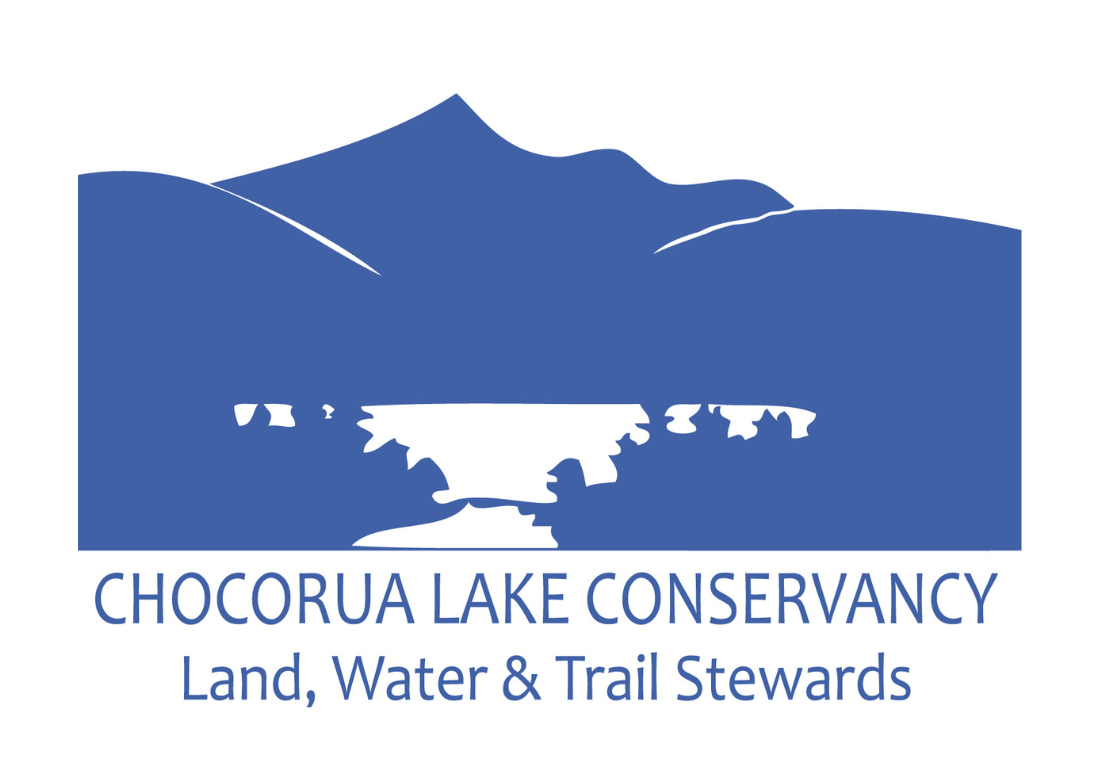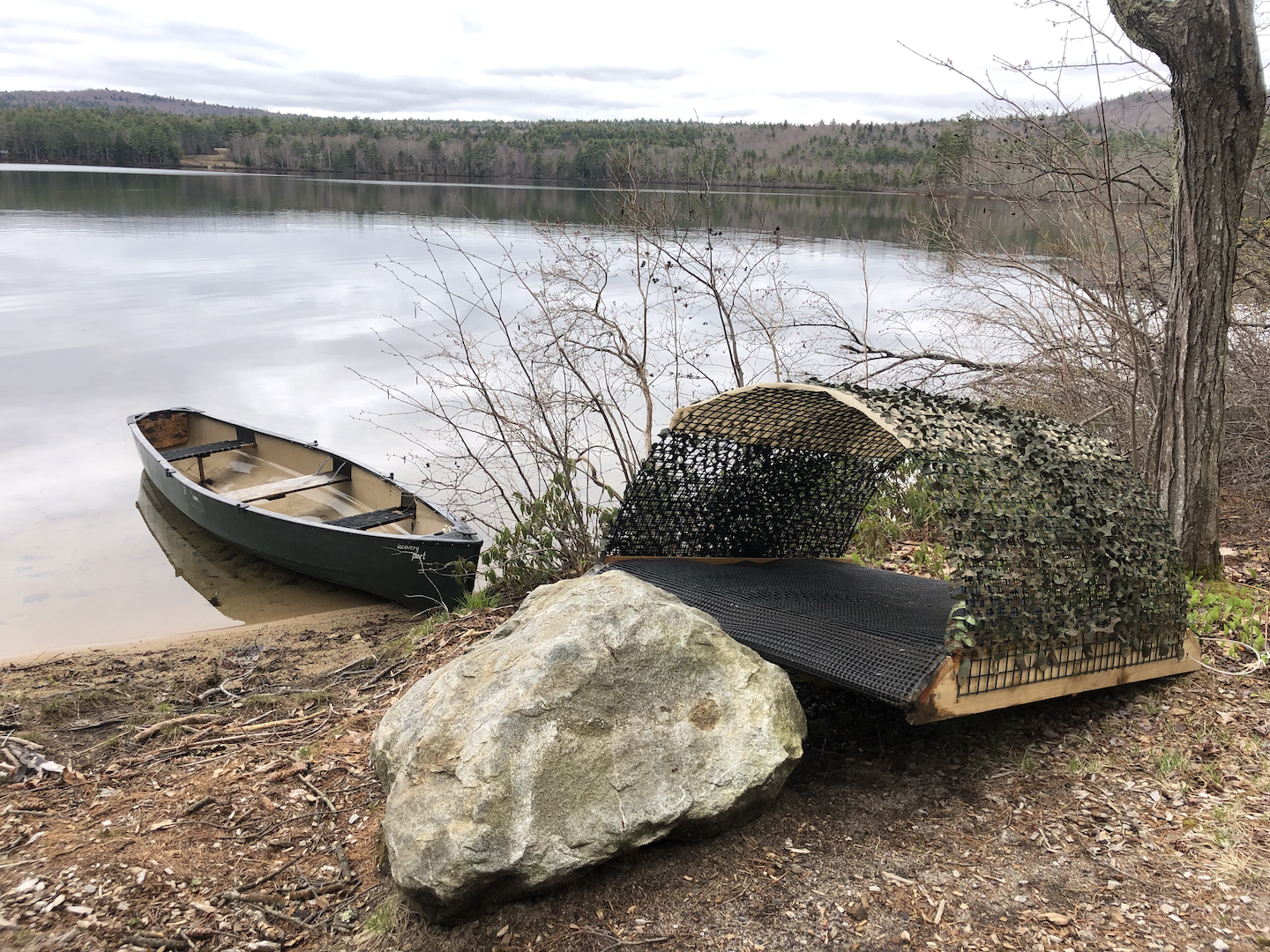
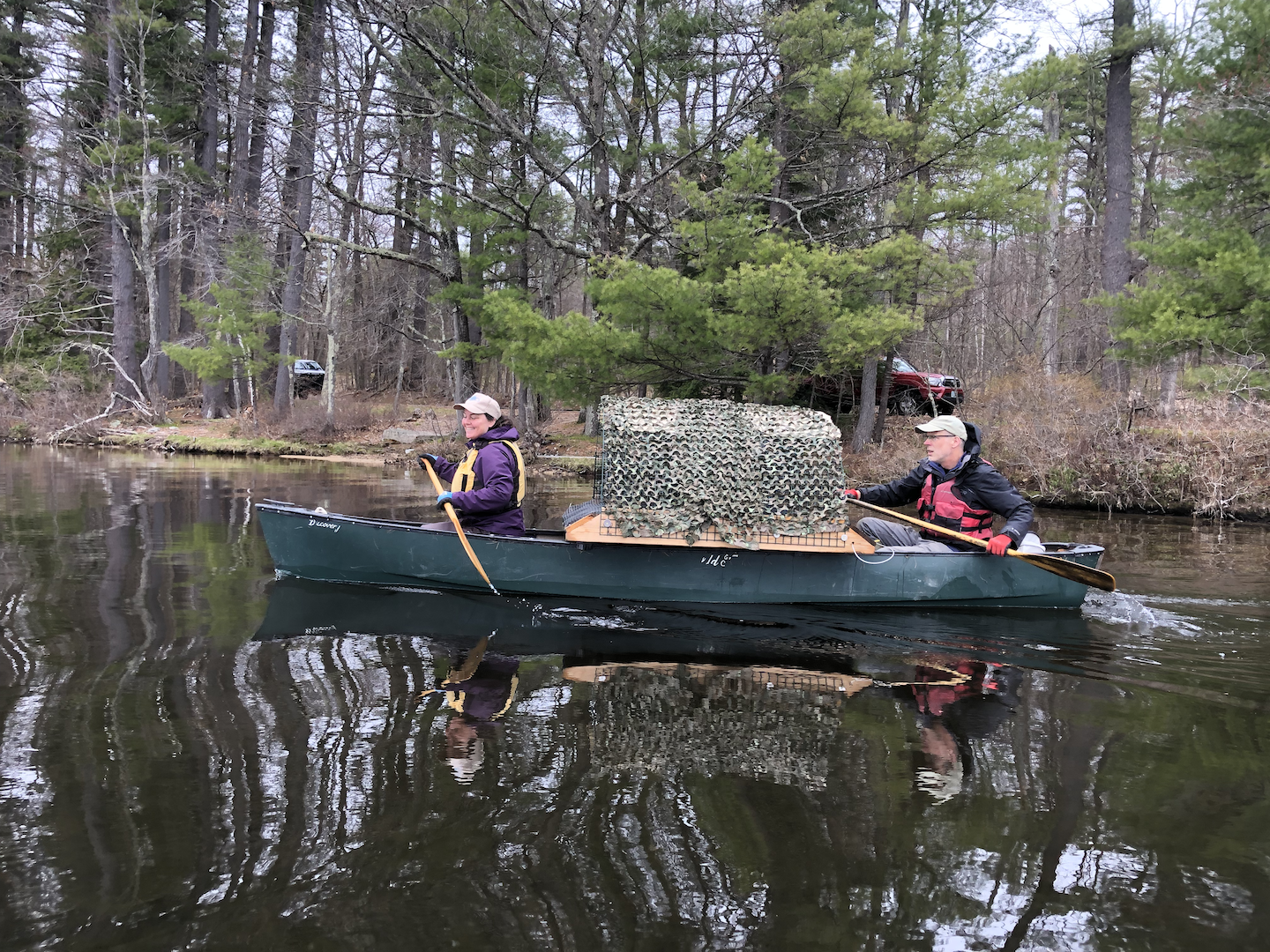
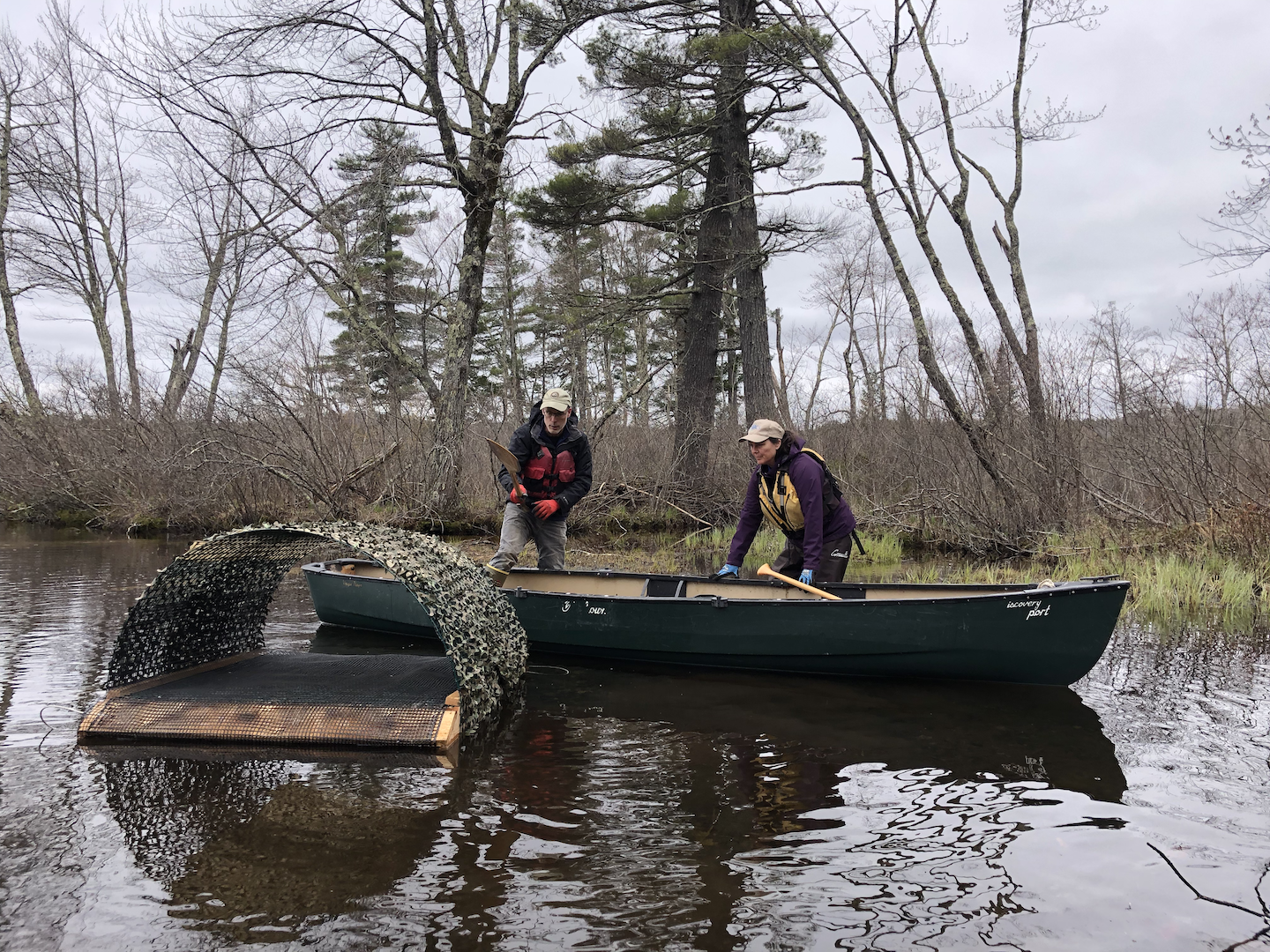
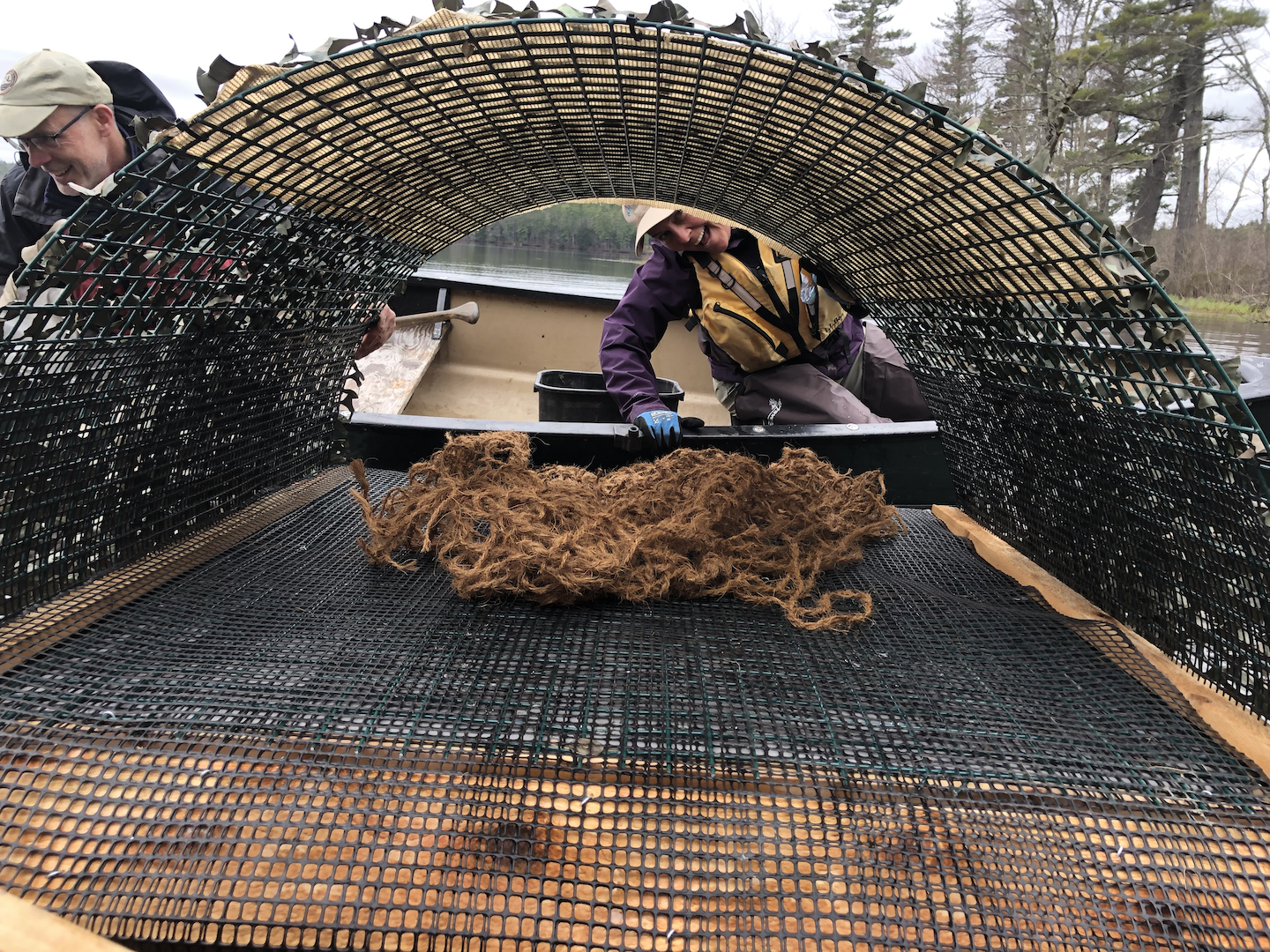
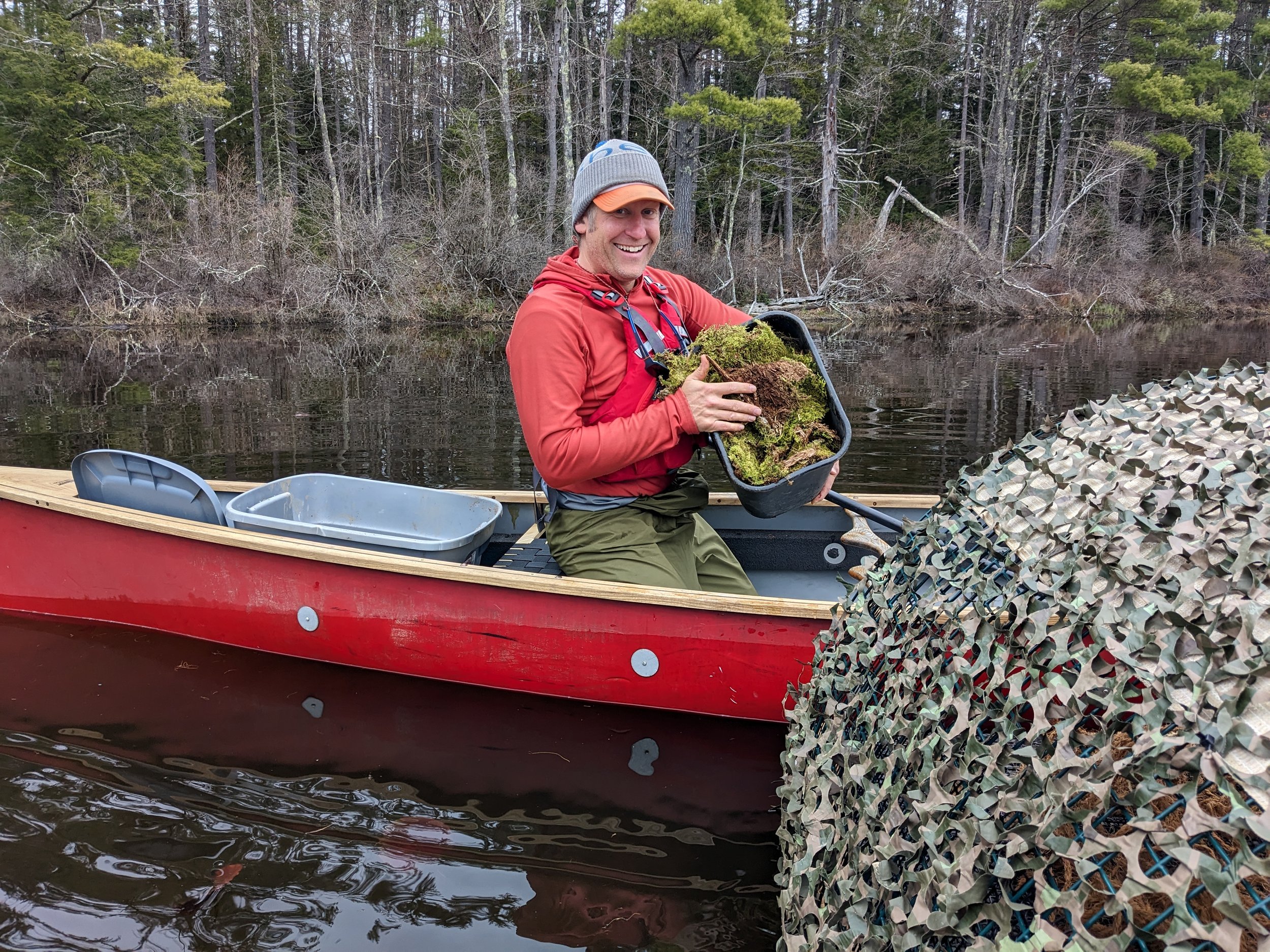
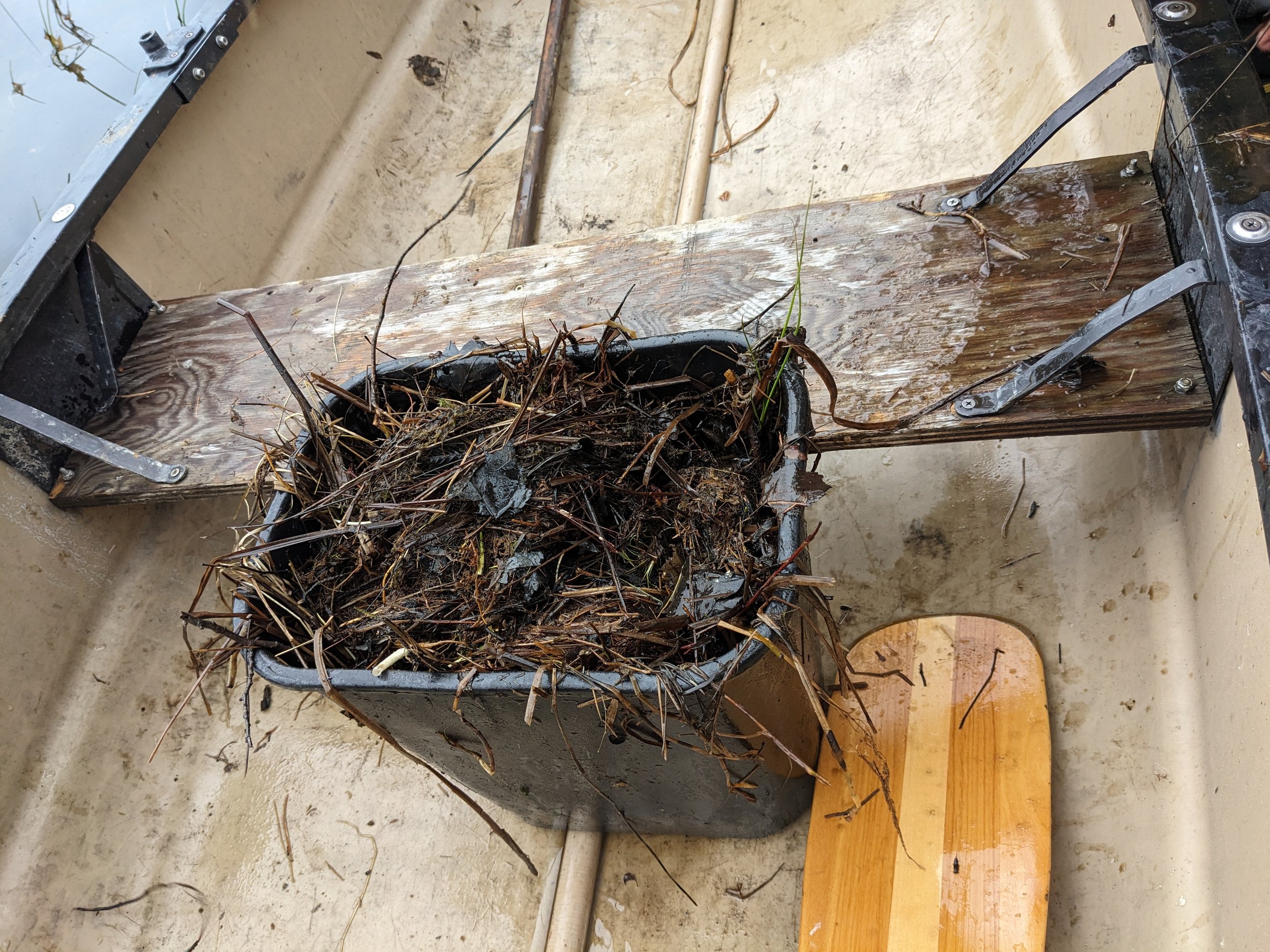

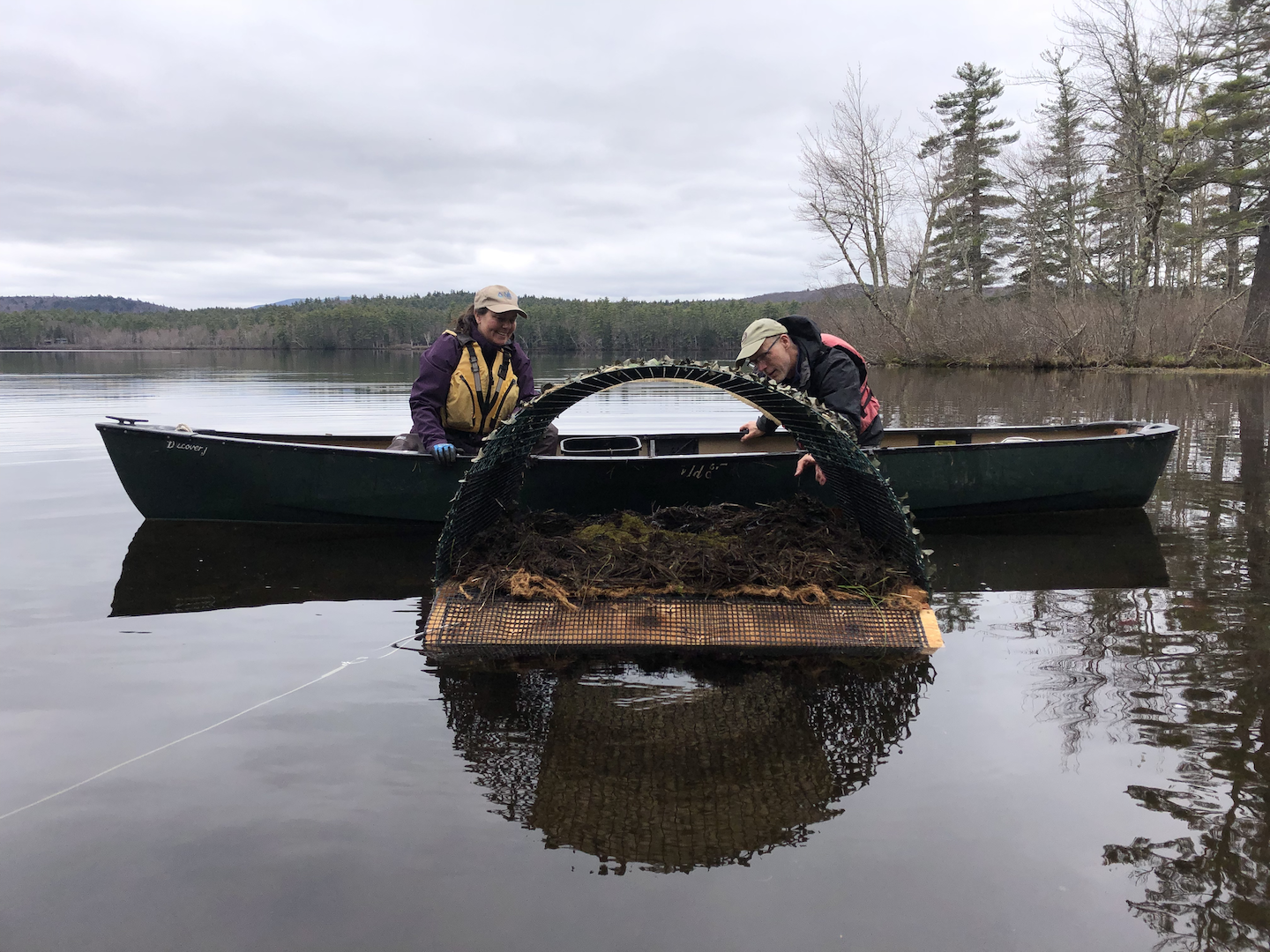
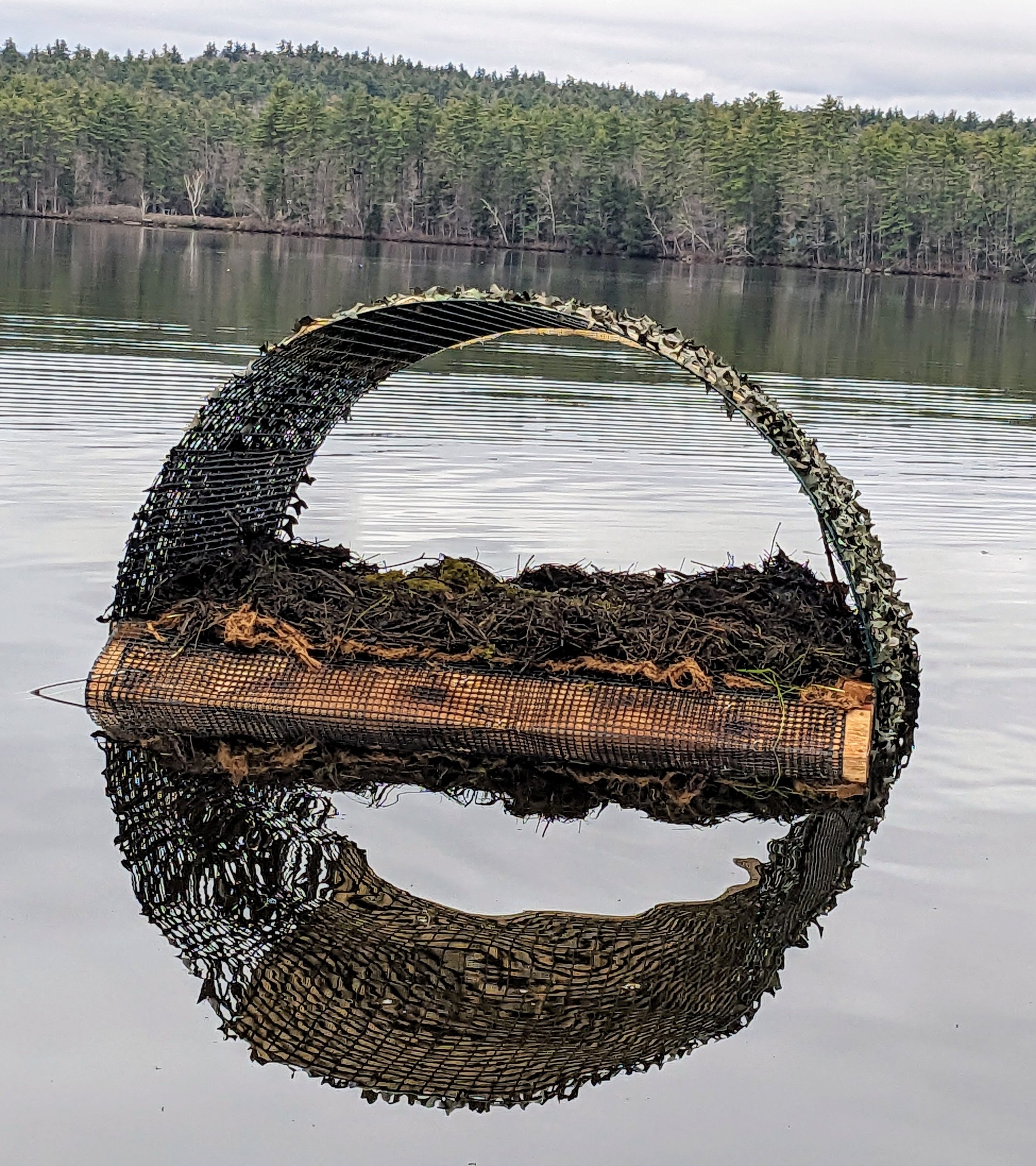
by Debra Marnich
A yodel in the morning mist and a tremolo far across the lake. We fondly rediscover that it's the time of year again when the most cherished and iconic bird of New England, the Common Loon (Gavia immer), returns for the summer season. A Common Loon pair has recently returned to Chocorua Lake as they have in previous years, to claim their territory and, we hope, hatch a successful nest of chicks, something they have been unable to do for the past three years. To support that hope, Chocorua Lake Conservancy (CLC) has partnered with the Loon Preservation Committee (LPC) to provide a different nesting opportunity for them.
We live in a critical time where the opportunity to support the successful recovery of certain wildlife species may still be a reality. Common Loons are listed as a Threatened species in New Hampshire. Threatened wildlife are those native species that are most likely to become Endangered in the near future if conditions surrounding them begin or continue to decline. Based solely on the status of the Common Loon in the State, it is of the utmost importance to actively support and encourage the success of the current loon population.
CLC and LPC got together this spring to install a loon nesting platform on Chocorua Lake, a “loon nest raft” built and donated by the LPC. Constructed of cedar, the raft is buoyant and rot-resistant. The platform's underside has an attached foam backing for additional flotation and buoyancy. After we installed the loon raft, we carefully prepared the nesting surface with layers of natural materials such as soil, moss, and shoreline vegetation. A canopy stretches over the platform to protect loons from overhead predators such as bald eagles. The canopy is lined with a thin camouflage material that helps keep the sun's rays at a minimum and helps blend the loon platform into the distant shoreline beyond it. Ramps are located on either side of the platform so that loons can easily enter and exit the structure. (Learn more about loon nest rafts on the Loon Preservation Committee’s website.)
Loon nesting platforms help ensure successful nesting loon populations and survival in several ways. Most loon pairs choose a nesting location near or along a shoreline or on an island, as they are not agile walkers on land and require quick access to water. However, the goal with nesting is to keep the nest high and dry to remain out of the water. As you can imagine, fluctuating water levels are a major threat to loon nests. Climate change has brought shifts in weather patterns and erratic storms with record-breaking rainfall totals over the last several years. After approximately 26 days of incubation, the loon nest on Chocorua Lake failed in 2023 because of flooding from major storm events.
Other threats to loon nests and young include predation from bald eagles. As the bald eagle population has risen, there is increased pressure on loon pairs to protect the nestlings and themselves. Land and aquatic predators also include skunks, raccoons, foxes, snapping turtles, and northern pike.
Other challenges to successful loon nesting include habitat loss due to development, and environmental chemical contaminants such as acid rain, PCBs, PFAF, and DDT. LPC tests unhatched eggs for the presence of chemical contaminants.
Fishing tackle and sinkers containing lead are the number one threat to loon lives. Please use our lead tackle receptacles at both the CLC Grove and Island public access areas on Chocorua Lake. To participate, turn in your lead tackle, discarded fishing lines, hooks, and lures to protect loons and all wildlife. Visit LPC online for a full summary of threats to loons.
We remain hopeful but uncertain if the loon pair may find the raft a hospitable home for the summer. Statistics show that there's a 50 percent chance that the platform will be used. Studies have also shown that loons may use a platform over time. There is no exact rhyme or reason why loon pairs nest in locations other than the platform. However, data the LPC collected in New Hampshire in 2023 reflects that 25 percent of all loon chicks hatched were hatched on loon rafts.
If you love this iconic New England bird, there are many ways of helping to protect loons to ensure their successful future. When you are out paddling on Chocorua Lake or other area lakes and discover a loon nesting platform or a loon nest, please practice ethical and respectful wildlife viewing and observation practices. Stay a minimum of 300 yards away from nesting and active loons. View loons and nests only with binoculars or telephoto lenses. Please stay a safe distance from all loon nesting signs. Visit the LPC website for safe viewing guidelines. If you see a loon in distress, please call 603-476-5666 or submit an onlineloon report. You can also support your local conservation organizations, includingCLC and LPC. Then, when you hear that magical, haunting call back and forth across the water, you will know that you are part of helping these beautiful birds to thrive.
Banner image: CLC Stewardship Director Debra Marnich and Loon Preservation Committee Senior Biologist John Cooley inspecting the completed raft. Photo: Mike Morin
